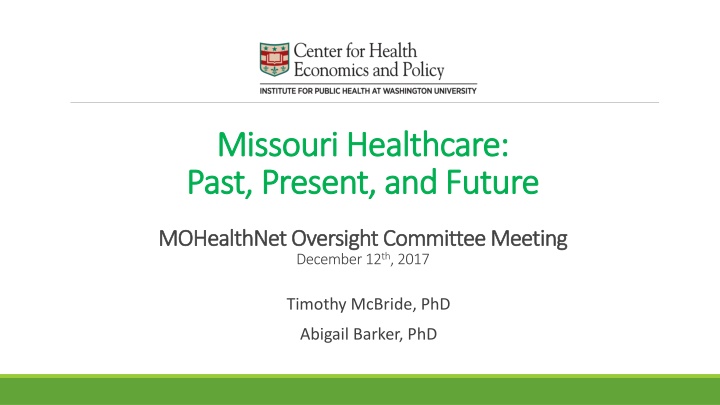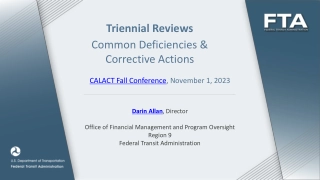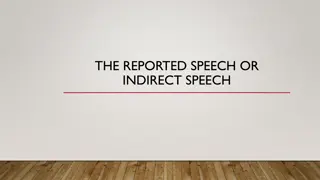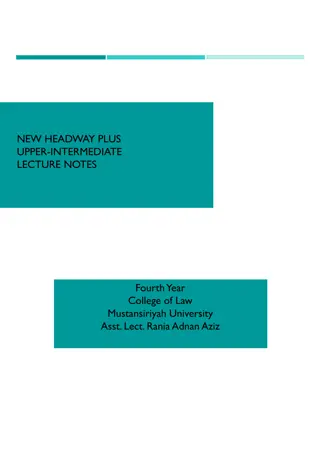
Insights into Missouri's Healthcare Landscape: Past, Present, and Future
Explore a comprehensive overview of Missouri's healthcare system, from historical perspectives to current challenges and future prospects. Discover key insights on access, workforce, health spending, and policy ideas shaping healthcare in Missouri. Uncover data on uninsured rates, healthcare provider training, and the health status of Missourians. Gain valuable knowledge on transforming healthcare in Missouri for improved access and population health within budget constraints.
Download Presentation

Please find below an Image/Link to download the presentation.
The content on the website is provided AS IS for your information and personal use only. It may not be sold, licensed, or shared on other websites without obtaining consent from the author. If you encounter any issues during the download, it is possible that the publisher has removed the file from their server.
You are allowed to download the files provided on this website for personal or commercial use, subject to the condition that they are used lawfully. All files are the property of their respective owners.
The content on the website is provided AS IS for your information and personal use only. It may not be sold, licensed, or shared on other websites without obtaining consent from the author.
E N D
Presentation Transcript
Missouri Healthcare: Missouri Healthcare: Past, Present, and Future Past, Present, and Future MOHealthNet MOHealthNetOversight Committee Meeting Oversight Committee Meeting December 12th, 2017 Timothy McBride, PhD Abigail Barker, PhD
Overview of Presentation Today Transforming Healthcare in Missouri: Ideas, Innovations and Investments October 13, 2017 in St. Louis, Sponsored by Washington University in St. Louis For that event we presented Background/Context for Missouri Access, Workforce (including data visualizations) Health spending in Missouri National trends and figures Medicaid cost drivers (including data visualizations) Moving forward Policy ideas from the event Goal: who to achieve improved access, improving population health, within Missouri s budget
Background/ Context The Uninsured in Missouri Missouri s Healthcare Providers Trained Missourians Health The Aging Population in Missouri
Percent Uninsured in Missouri and U.S., 2008-16 Uninsurance rates in Missouri were lower than in the U.S. until 2014, when the U.S. uninsured rate dropped below Missouri s rate. 18% U.S. MO 17% 16% 15.5% 15.1% 15.1% Percentage of population 14.8% 14.6% 15% 14.5% 13.7% 13.6% 14% Distribution of Uninsured Population in Missouri, by Income, 2016 13.2% 13.2% 13.0% 13% 12.4% 11.7% 11.7% 12% 61,506 (12%) 11% < 138% FPL 9.8% 10% 229,084 (43%) 8.9% 9% 138-399% FPL 9.4% 8.6% 238,658 (45%) 8% 2008 2009 2010 2011 2012 2013 2014 2015 2016 >= 400% FPL Year SOURCE: Bureau of the Census, September2017, https://www.census.gov/library/publications/2017/demo/p60-260.html .
Missouris Healthcare Providers Trained In 2016, there were 448 new MDs and 413 new DOs trained in Missouri. Number of Doctors Trained in Missouri Annually U of Missouri at Columbia 300 U of Missouri at Kansas City Meanwhile, 1699 (11%) of current active MDs are above 65, with another 3192 (20%) between the ages of 55 and 64. 250 St. Louis U 200 Washington U in St. Louis A.T.Still U at Kirksville College of Osteopathic Medicine 150 Also, 298 (13%) of current active DOs are above 65, and another 541 (24%) are between ages 55 and 64. College of Osteopathic Medicine at Kansas City U 100 50 0 2011-12 2012-13 2013-14 2014-15 2015-16 Data Viz Link
Missourians Health According to America s Health Rankings 2016 Annual Report: In the past year excessive drinking increased 10% from 16.1% to 17.7% of Missouri adults. obesity increased 7% from 30.2% to 32.4% of Missouri adults. HPV immunization among Missouri males aged 13 to 17 years increased 122% from 11.3% to 25.1%. In the past eight years preventable hospitalizations decreased 36% from 88.6 to 56.6 discharges per 1,000 Missouri Medicare enrollees. In the past two years, diabetes increased 20% from 9.6% to 11.5% of Missouri adults.
The Role of Aging The number of people aged 65 and over in Missouri is projected to rise 41% over the next 15 years. Elders face higher health costs and are more likely to be on Medicaid, so this will drive up state spending on Medicaid. Missouri Population Projections, 2015-2030 2,000,000 25.0% 1,800,000 20.2% Number of People Age 65 and Over 18.8% 1,600,000 20.0% Percent of Total Population 16.9% 1,400,000 15.2% 1,200,000 15.0% 1,000,000 800,000 10.0% 600,000 400,000 5.0% 200,000 922,418 1,047,071 1,189,605 1,301,714 0 0.0% 2015 2020 2025 2030 Population 65 and over Percent of Total Population
National trends and figures Indirect costs Medicaid cost drivers Health Spending Taking all this in, can we find a balance between the ideas of access for everyone and a healthy state budget not dominated by health care costs?
National Trends in US Health Spending U.S. Health Spending as Percent of GDP 20% Actual Projected Percent of GDP 15% 10% 5% Note: Total health care spending is defined as the amount spent on health care services across all payers, including patient out-of- pocket payments. 0% 1960 1965 1970 1975 1980 1985 1990 1995 2000 2005 2010 2015 2020 2025 Average utilization is presented; not everyone uses a particular service in a given year, especially inpatient stays and ED visits. CDC: 86% of nation s $2.7 trillion annual health care expenditures are for people with chronic and mental health conditions.
Costs Due to Chronic Conditions Chronic disease accounts for approximately 86% of nation's aggregate health care spending, an estimated $8,350 per person in U.S. each year (CDC) Treatment of chronic disease captures an even larger of public spending: 96 cents per dollar for Medicare 83 cents per dollar for Medicaid. Example: Healthcare costs for a person with diabetes are over $13,000/year; for a person without diabetes, $2,500. For every one point reduction in HbA1c (a measure of blood sugar over time), a 40% reduction in microvascular complications is reported (blindness, kidney disease, nerve damage) and up to $4,100 can be saved in annual healthcare costs.
Indirect Costs: Uncompensated Care Missouri Hospital Association reports a 469% increase in uncompensated care cost at its member hospitals over the past 10 years. So even if we don t cover those on Medicaid, demographically similar non-Medicaid eligible population may be adding to the trends we have seen.
Direct Costs to Missouri Medicaid How much of the year-to-year change in Medicaid spending is attributable to what sources? Using the data available to us, we can disentangle these sources of growth, attributing overall spending growth into growth attributable to: Enrollment growth Spending per enrollee Prices/inflation Utilization per enrollee
Unpacking Medicaid Spending Growth What might account for the rise in utilization ? Some possibilities: Enrollees are sicker/older and need more services Services are billed more intensively may be a provider response to low reimbursement rates may be due to lack of code options for less intensive services Unnecessary services are provided, through duplication, incomplete recordkeeping, etc. Other possibilities? Let s see how much of spending growth comes from enrollment growth vs. utilization growth, if we assume prices grow at the rate of inflation. Missouri Medicaid Utilization Growth - Data Visualization
More on Medicaid Spending Trends Spending Growth by Category Over Time (This viz is very similar to the previous one but extends the timeline into the future, making projections based upon growth rate assumptions.) Subcategory Spending Over Time Each eligibility category consists of multiple programs. Spending is broken down for each here. Spending Trends vs. General Revenue This viz shows spending growth in each eligibility category over time as compared to the growth in Missouri s General Revenue (GR) fund.
Transforming Healthcare in Missouri Transforming Healthcare in Missouri event Policy ideas
Transforming Healthcare in Missouri Event Transforming Healthcare in Missouri: Ideas, Innovations and Investments October 13, 2017 in St. Louis Sponsored by Washington University s Center for Health Economics and Policy (CHEP), Institute for Public Health (IPH) Clark-Fox Institute for Public Policy, Brown School Format: Keynote: Robert Hughes, Director, Missouri Foundation for Health State Policy overview: Timothy McBride, Professor, Brown School, CHEP Co-Director Panel Discussion Breakout groups on Mental health, Workforce, Opioids, Care coordination, Patient perspectives Comments and reactions: Dr. Randall Williams, Director, Department of Health and Senior Services
Selected Policy Suggestions from the Event SCOPE OF PRACTICE: Review current licensing procedures for increased marketing of nurse practitioners (NP), physician assistants (PA), midwives, and pharmacists in order for them to provide practical, safe, and effective solutions for Missouri's loss of qualified personnel. PROVIDER LIST: Create and disseminate a list of providers that accept Medicare, Medicaid, telehealth, & crisis intervention. PDMP: Implement a statewide PDMP for doctors and prescribers to view prior to and subsequent to prescription and distribution. CHURN/MEDICAID NOTICES: Evaluate application and renewal process to prevent cycling in and out of Medicaid. Ensure that termination notices are sent with accurate and complete information. THERAPY CODES: Reinstate coding in Medicaid that allows for reimbursement of physical therapy sessions post-orthopedic surgery.
Selected Policy Suggestions from the Event Encourage medical schools to incentivize primary care practice. Encourage and fund care in non-traditional settings (telehealth, schools, supermarkets, churches, mobile clinics) and by non-clinicians (community health workers, nutritionists, lactation consultants) to better target the population at large with preventive health services. Create flexible payment options that can address social determinants of health (allow reimbursement for transportation for non-emergency healthcare, for food, housing, etc.) with attention to the social determinants occurring at the community level. Integrate or co-locate mental health providers with primary care clinics.
Background Material Website created with Document summarizing meeting [ https://publichealth.wustl.edu/news/transforming-healthcare-in- missouri-recap/ ] Policy briefs and data on Workforce Mental health Opioids Care Coordination Patient perspective
Questions? Center Co-Director Tim McBride at tmcbride@wustl.edu For data questions related to this presentation, contact Center Affiliate Abigail Barker at arbarker@wustl.edu Center Manager Leah Kemper at Kemper@wustl.edu https://publichealth.wustl.edu/centers/health-economics/ https://publichealth.wustl.edu/health-economics/interactive-data/






















